Caroline Livesey is no stranger to tough races. As an elite gravel cyclist with a background in professional and extreme triathlon, she’s raced on some of the toughest terrain the sport has to offer - and she's witnessed firsthand the growing pains of a discipline transitioning from grassroots adventure to global competition. In this compelling article, Caroline takes a hard look at the rapid professionalisation of gravel cycling, a sport once celebrated for its laid-back ethos and open format, now grappling with inconsistent rules and uneven standards - especially for women.
With the rise of high-stakes races and increasing involvement from the UCI, Caroline argues that it’s time to ensure professional female athletes are given clean, consistently regulated races—just like their male counterparts. She explores how the romantic chaos of gravel’s past can coexist with its professional future, and why race organisers must evolve to support the sport’s next chapter.
"Riders are blocked, dropped or crash as these amateur men ride through. Our group splinters, I can’t even see most of the women."
The gun goes and out of the gate the pace is high, but I know what to do. I have been here before. The women’s pro field always go out fast at gravel races. You have to push hard to make the first selection. Riders around me are jostling for position and 3 km from the start the track turns sharply and a steep climb appears. We battle up it and I know instinctively that the pack has reduced considerably as we summit. I try to recover a little before the next big climb, there are a few surges but then the pace settles momentarily. We fight through some uneven rocky ground, wheels spinning unpredictably and riders changing course without warning to find the best line. It is chaos, but that is gravel racing and we are all ready for it, fully focused on the ground and the wheels around us in the group of about 20 women. Then suddenly, just 15 mins into the race, our group is swamped by 100 stronger riders. These riders are also full of adrenaline, racing on max gas, fighting for the best lines through the rough terrain and in completely blinkered racing mode. We are just an obstacle. Riders are blocked, dropped or crash as these amateur men ride through. Our group splinters, I can’t even see most of the women. Instead of racing with them, I am now in survival mode, trying to stay safe and moving as fast as I can while not giving up lines to aggressive riders and keeping sight of what is happening ahead. I see female riders I know were dropped and have been brought back with the men. In a matter of seconds the game has changed completely. And in a race with no male/female drafting rules – anything goes.
We are no longer racing each other, and we are also left with a difficult choice. As Morgan Aguirre (2 x UCI winner 2025, Orbea, Pas Normal Studios) told me “The way that 19 year old men race is not something I want to get involved in”.
Nor should we have to.
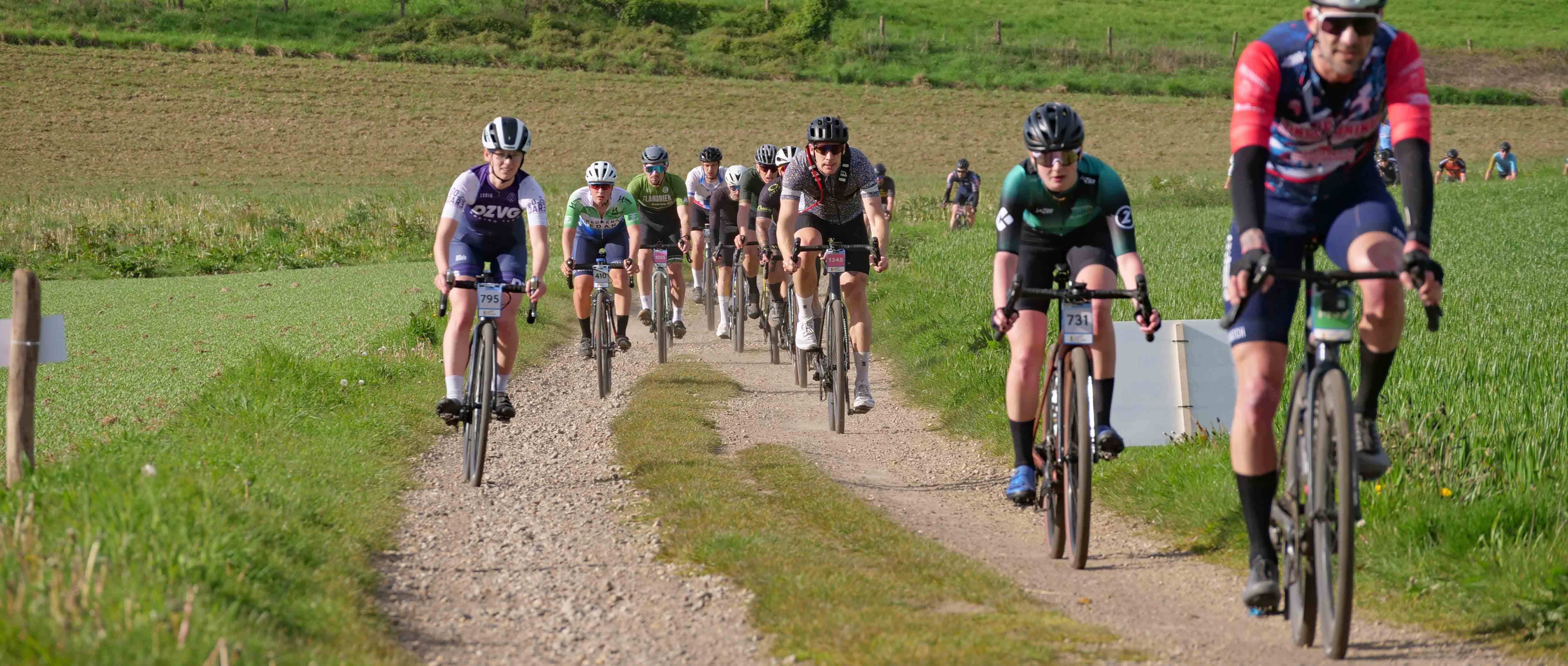
Integrity of Sport
For gravel to be a respected professional sport we need to have consistency, both between the men’s professional race and the women’s, but also across all of the gravel races which promote a professional field. Perhaps I can simplify it for ease:
- Professional women racing other professional women only.
- A clean race in which the professional women can form their own race dynamics.
These are normal facets of bike racing that perhaps professional male riders take for granted. But they are not always present in female gravel racing and certainly not consistently. There are often two races with two different sets of rules; professional men having a clean race with competitive integrity at the front and professional women battling it out as part of the amateur men’s race behind. It really is simple, if we want to grow gravel racing as a professional sport we need consistency.
Why?
For professional women, being expected to battle it out amongst the amateur men’s race has a number of impacts:
Drafting. Cycling is a sport where drafting is an advantage. Having male riders starting at the same time or a few minutes behind the professional women, and without any rules banning inter-sex drafting, the female race is altered by the advantage given from drafting behind men. Often riders who are dropped early in the race are brought forwards again by male riders.
Safety. When there are small time gaps and/or a flat course, the amateur men’s race catches up to the women’s race when big groups are riding together. It is unsafe for both groups of riders, especially on courses with restricted space or particularly rough ground.
Race dynamics. Racing in these circumstances stops professional female riders from developing their own race dynamics and slows development of the sport. Riders need to understand how to control race dynamics, identify rivals strengths and weaknesses on different courses, race boldly and take risks to make breaks, drop other riders, or contest a sprint finish.
Visibility. If women are lost in footage and photos of men racing, we can’t grow the visibility of our sport. To be a respected professional sport, it cannot be a subset of amateur men’s racing. This is both to encourage sponsors and fans to be interested in female riders, but also to grow participation for female cyclists and inspire future female professional riders.
Motivation. Professional female riders are finding it hard to stay motivated to train and race when the integrity of the sport is broken, and there is a confusing and inconsistent set of rules. Women won’t stay in a sport that does not give them equal and fair opportunities.
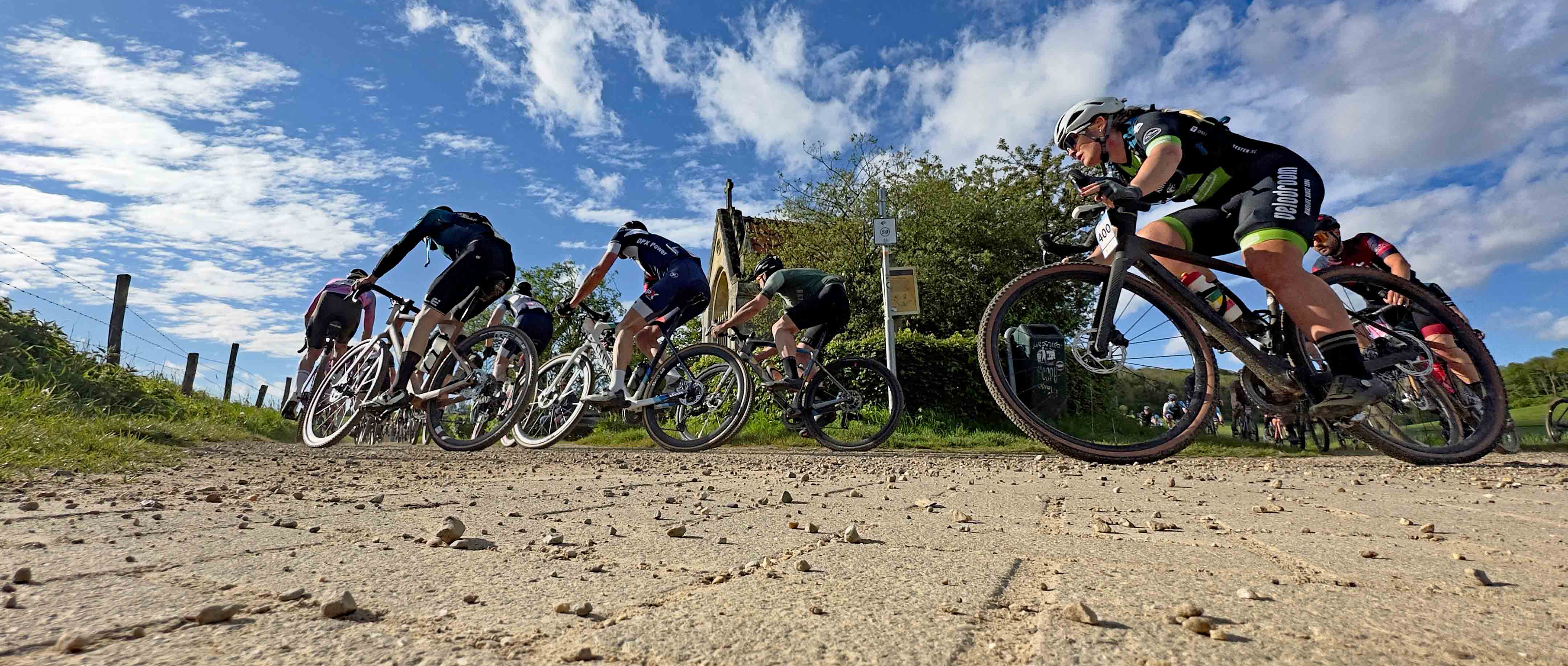
The “Spirit of Gravel”
But how did we get here?
Gravel racing developed from a grassroots start point with small events aimed at bringing riders together and forming communities of people keen to explore away from the roads. Initially events were unsanctioned and often self-supported and community driven. Riders were typically those with experience of bikepacking and ultra-cycling, riding to find friends and explore. You can understand then that in this environment it made no sense for women to ride separately.
"While women are still a significant minority in gravel racing, we can’t hope for that to change without some changes to the sport."
But gravel racing has exploded in recent years and is now a world apart from where it started. It has developed rapidly into a professional sport with elite riders who make a living solely from racing gravel. Just a few years ago there were no pro fields, no prize money, no media attention or sponsors, no teams, no World Championships. Now the sport’s flagship USA event, Unbound Gravel, has a highly anticipated live broadcast of the 200 mile elite races for both men and women. In Europe, the elite UCI Gravel World Championships was broadcast live in 2023 (only men) and 2024 (both men and women) and has grown into a respected global event. Similarly, the Gravel Earth Series have livestreams of The Traka and Ranxo and are hoping there will be more in the future. Athletes at the top level in gravel racing now have teams, sponsors, earn prize money and can make a living from the sport.
But this rapid development has brought with it confusion. Holding onto the “spirit of gravel” while elevating the professional athletes and their sponsors and teams is something that many gravel races, and riders, still struggle with. But there is room for both. While women are still a significant minority in gravel racing, we can’t hope for that to change without some changes to the sport.
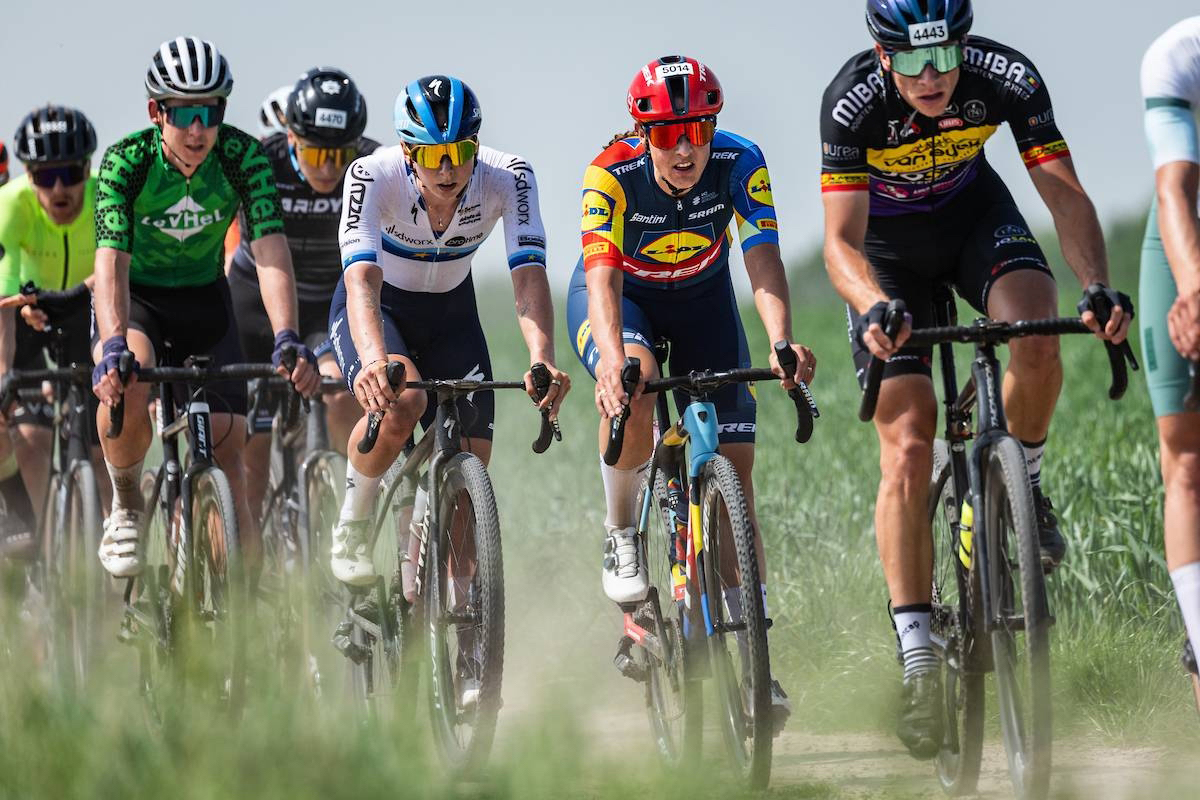
Image courtesy of Houffa Gravel
Solutions
There are some ideal solutions:
Define the race. Race organisers can be clear about the intent of their event. If it is a mass participation event to get people riding together, then let it be. Have a mass start and no rules. But if hosting a professional race with podiums, prize money and associated media attention, then provide a race with clear rules consistent with professional gravel racing.
Separate fields. For professional races, the female start must be separate.
Appropriate time gaps. Allow sufficient time gaps suited to the course and road closure restrictions to enable safe racing. A 1 or 2 minute gap does not constitute a separate start.
No drafting. Male/female drafting must be banned, and all riders briefed. This includes raising awareness amongst amateur men about how they can safely pass the professional women if they do catch them.
Current situation:
The Gravel Earth Series (GES) is leading the way on this. With events which include The Traka and The Rift, GES have come up with some very effective solutions to ensure the female professionals have a safe and fair race. Gerard Freixes, CEO and founder of Klassmark who organise the GES told me that Gravel Earth always have three separate categories at their races: PRO male, PRO female and Open. Each of these categories has a separate start with the Open category being a mass start of men and women together, starting behind the professionals. For the professional fields drafting between men and women is not allowed. . This is not policed; it does not need to be. I have raced in events with this rule and once they understand it, riders adhere. Open category riders are not competing for positions, money or sponsorship so the same rules do not apply. This appeals to riders who wish to race in a mixed field and ride with friends. Freixes also told me:
“We always ensure a minimum time gap between the female and male PRO starts, which typically ranges from one to two hours depending on the volume of participants. This is the most important factor to consider: you cannot apply the same criteria to all races.”
At races where they think the open men will catch the professional female field, GES have begun to have a motorbike at the front and rear of the women’s race. This moto has two functions; clearing the path ahead of the women if they are going to catch riders who have perhaps been on a shorter course, but also preventing riders who catch from behind from drafting or interfering with the female race. Freixes assured me that pro female riders have responded very positively when they have had this in place.
Mixed Messages
The UCI Gravel World Series is different. A global series with nearly 40 events, it is not possible to generalise and some of the series events are doing a fantastic job at elevating the female professional race. I recognise that gravel riders are lucky to have so many different races to choose from. The UCI wanted to create a series which allows riders of all ages to compete at a higher level in their age group, which is a fantastic goal. But having instigated a series which rewards amateur riders with podiums and grants places for a World Championship event, the UCI makes this a race for everyone. Consistent rules are therefore needed. There is no place for male/female drafting and mixed mass starts when amateur world titles are on the line.
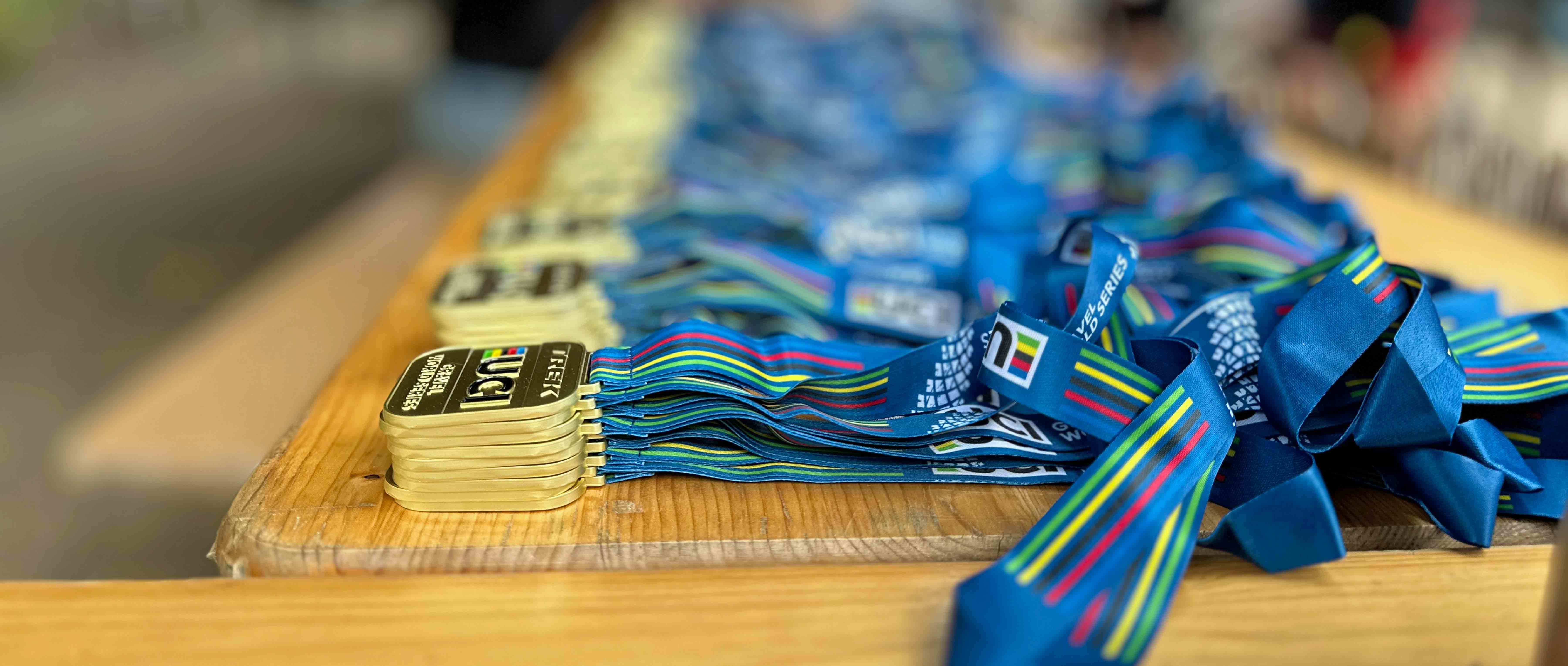
Yet, this year alone I have had two separate UCI race organisers tell me that they hear mixed messages from female riders; that many want to have mass starts and race with the men. The UCI Gravel Suisse told me “We also want to acknowledge that within the women’s field, we receive different viewpoints: some female riders prefer to race alongside the men to increase race dynamics, while others prefer a fully separated start. It is challenging to meet everyone’s expectations, but we are listening and working hard to find the best approach.”
And yet, not a single professional female gravel cyclist that I have spoken to holds the view that racing with men is a good thing for our sport. And since when do players in a game get to decide the rules?
As female professional, Nicole Frain (Ridley Racing Team, 2022 Australian Road Race Champion) told me of the current situation at UCI races: “It is important to raise points about sponsors and wages. Riders are earning those now and they come with an expectation to perform. But as it stands now our results can be impacted in this way, and this could in the end be costly.” Caught up in the chaos at the recent UCI Gravel 150, Nicole posted “It is becoming frustrating the impact that age group riders have on our elite women’s race, results and safety. We can no longer attack, because age groupers literally close the gaps. We can only follow. Until finally we get to sprint among age groups.”
“Non drafting between sexes should definitely be a mandatory rule. I have seen in races where boyfriends, partners or friends are waiting for certain female riders to tow them around during the whole race.”
Another professional Flavia Oliviera (Olympian, Specialised/Garmin/Excel Sports) told me that she is finding it incredibly frustrating. She has attended races where women have been on the podium who would not be there if it were not for the male riders that helped them during the race. “Sometimes I do believe women are the problem. Perhaps they have this idea that gravel racing is just using men to their advantage, maybe it is because they have not raced at the highest level before. I lose all respect for the women who ‘cheat’ in this way and don’t race fairly.”
She is not the only one. As Gee Schreurs (Team SD Worx) told me: “Non drafting between sexes should definitely be a mandatory rule. I have seen in races where boyfriends, partners or friends are waiting for certain female riders to tow them around during the whole race.”
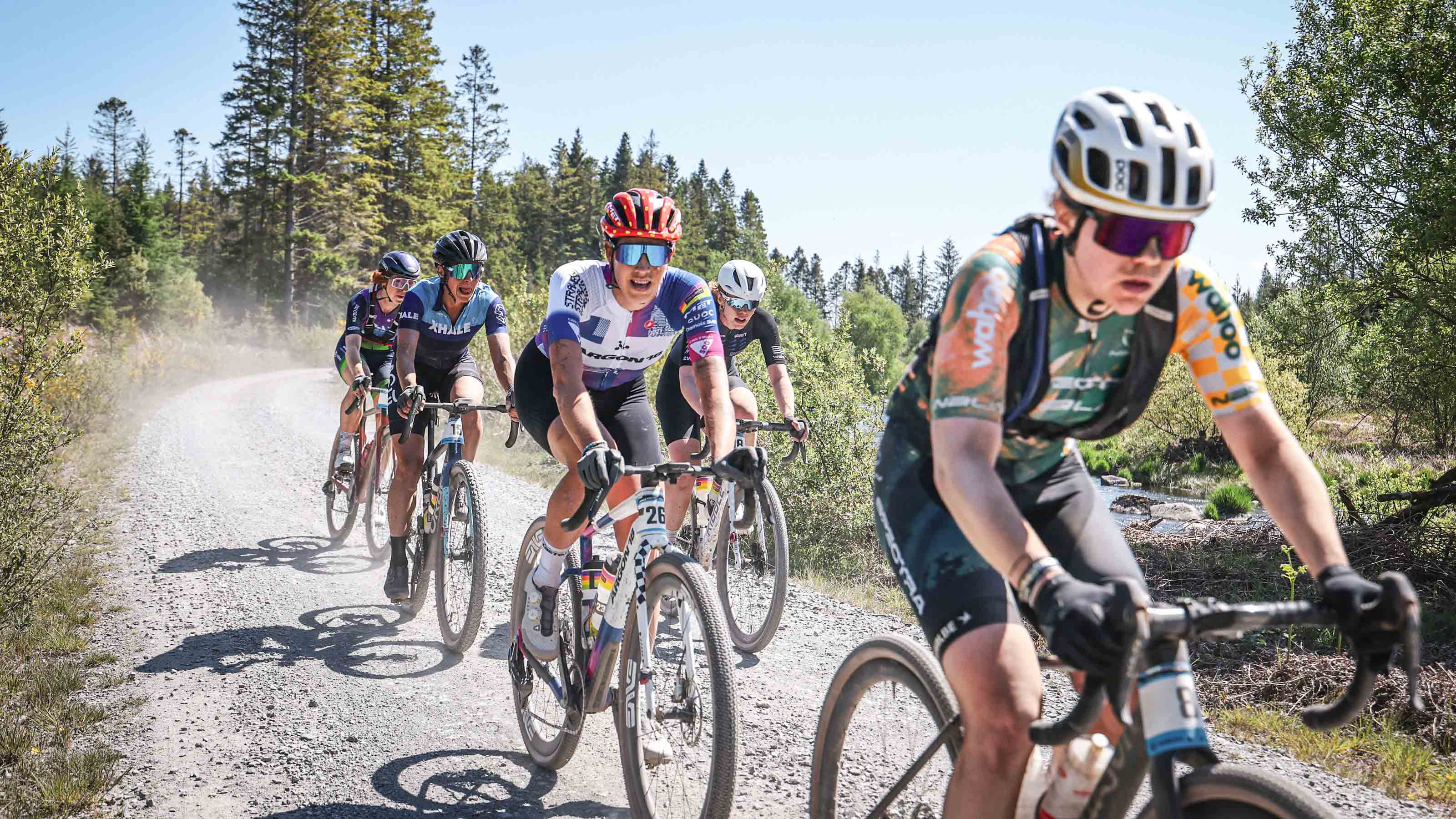
Image courtesy of Sportograf
The message needs to get out to female professionals that the future of our sport depends on them standing up for fair racing and consistent rules. In fact, many female riders I spoke to now refuse to enter UCI gravel events unless the organiser can clearly state that they have significantly separated the male and female fields like The Gralloch did this year. The UCI official regulations for starting procedures allows for a minimum of 1 minute in time gaps with riders in various orders and allows races to do their own start procedure outside of these regulations regardless. But as the UCI does not ban male/female drafting, a 1 minute time gap means nothing. A separate start can even be more dangerous and frustrating if the men are set off just 1 minute behind.
“A fair race means not having to deal with male racers interfering. We should have our own start, far enough from the guys so we can race clean."
As Morgan said: “If there isn’t a no drafting rule then a separate start doesn’t matter. Because the problem happens when you get caught by men and there is no rule. I raced and won at UCI Monaco earlier this year where there was a small gap of about 2 minutes between the women and men. We got caught about 15 mins into the race, so after that there were three of us sitting in a group of men and it makes the race boring. I am not going to try and attack and breakaway when I know there is a group of men with women in it behind me, or more women being pulled back up. It takes away all the tactics, so you don’t race your own race or to your ability and that is frustrating.”
Both Gee and Morgan have been vocal about the issues in some UCI races, with Gee telling me: “A fair race means not having to deal with male racers interfering. We should have our own start, far enough from the guys so we can race clean. No drafting – just racing based on our own effort. We need proper race formats, not just afterthoughts.”
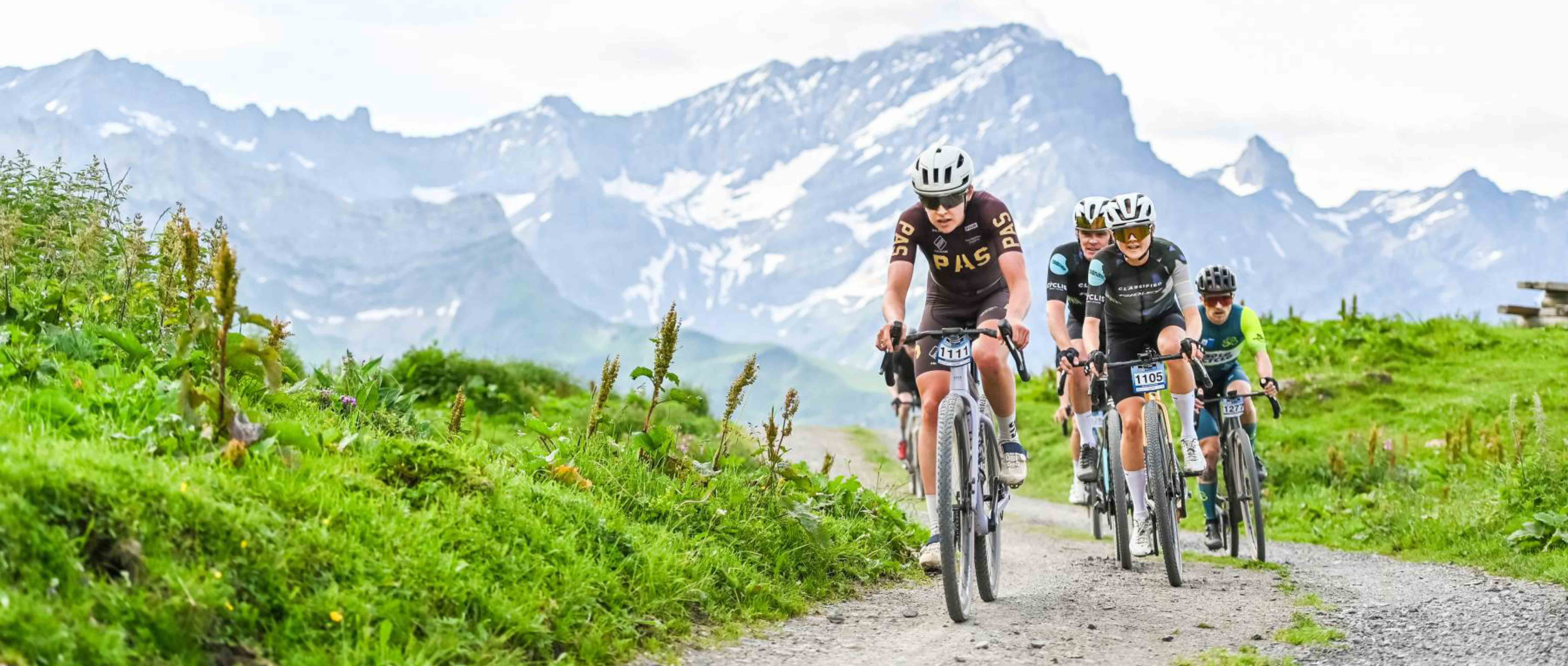
Image courtesy of Gravel Suisse
I interviewed Erwin Vervlecken, UCI Gravel World Series manager, to get his take on the challenges faces by professional females in our sport.
I asked Vervecken what having a safe and fair race for the female pros looks like to him. He answered: “I have been a professional road and gravel racer for many years and I understand race dynamics. I have been participating in many races and organising races so I know how it works. Women often pretend that if they can hang on with a group then it is not fair racing. I don’t understand why it is not fair racing. If you can hang with a group and another rider is dropped then you are the stronger rider. If you get dropped by a group it just means that the others are better. In 99% of cases women end up in the order they should be at the end of the race.”
Race organisations:
Of course, as mass participation events, gravel events do not survive on the professional fields. Race organisers have many considerations when they are putting together the race day timetable and the key factor will always be where road closures are needed.
Vervecken “Riders don’t realise that the hardest thing is getting approvals for the events from local authorities. Road closures are usually needed, although some events are on open roads. It is the biggest challenge to the race organisers, and without the approvals there won’t be a race.”
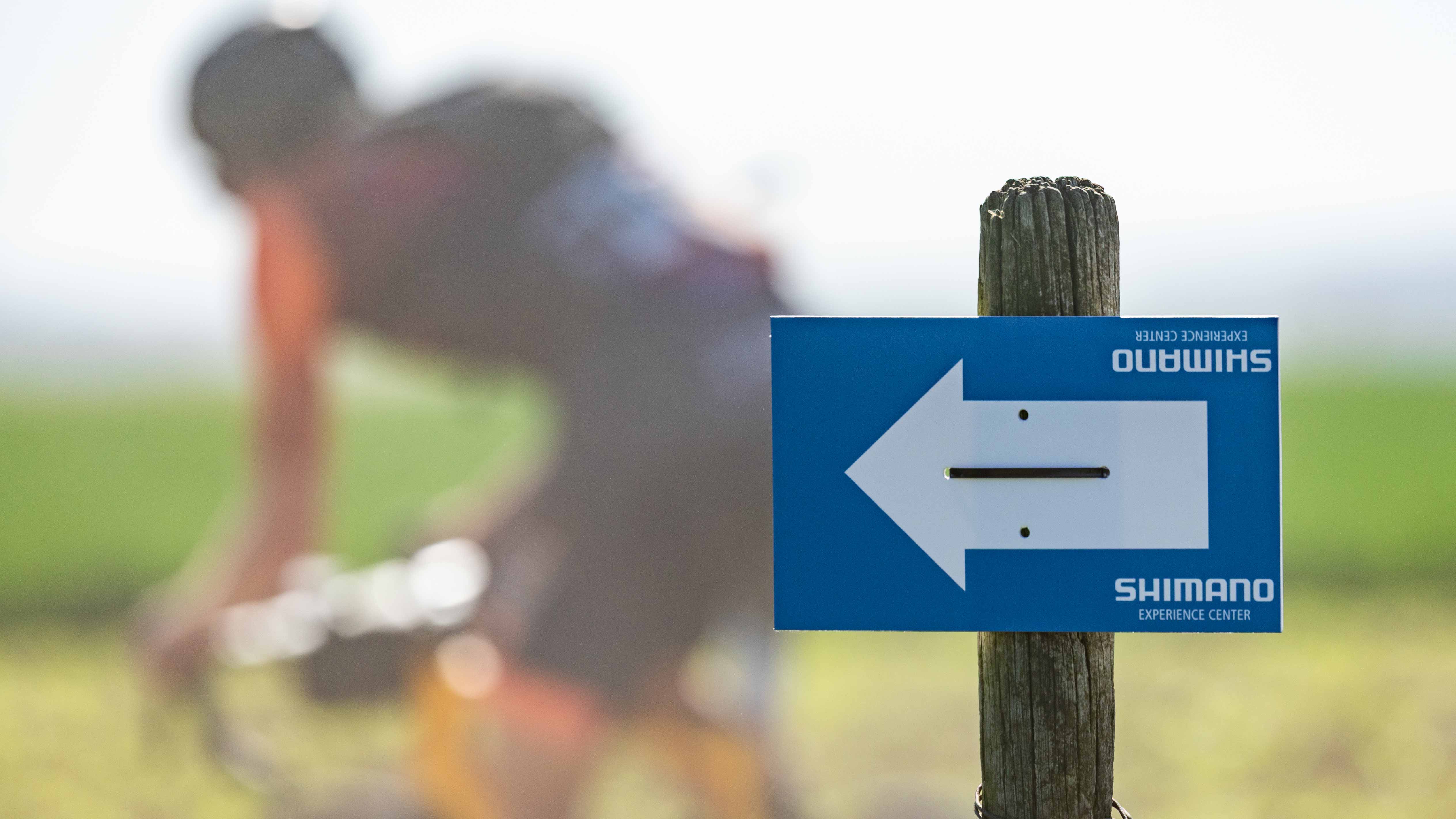
Image courtesy of Marly Grav/Leon van Bon
He did acknowledge that as events grow and authorities recognise their value, longer road closure approvals in Europe are becoming easier to obtain for gravel races. But as a new sport, Vervecken said it can be difficult to get the support of local stakeholders including residents and police.
Freixes also made this point: “I also ask you to consider the wider reality of organizing gravel events:
- Some courses are short or share segments.
- Municipal regulations may limit start times or road closures.
- There are budget constraints and limited daylight in many locations.
So yes, we are working to protect the women’s race and ensure fairness and safety. But we must also be practical and adapt to the local context of each event.”
I don’t underestimate the difficulty of organising these races, nor the challenges in becoming an established race in a fast growing sport. But regardless of these things, we need to have consistency. You don’t build a small tennis court because you don’t have space for the correct size and then expect a professional match to take place on it. Which adds another difficult question to the mix.
The UCI race Gravel 150 was heavily criticised by the elite women post-race after dangerous race conditions led to unfair racing for the women and unsafe racing for all the riders. As Rosa Kloser (Unbound winner 2024, WMN Cycling team) said after: “Some organisers argue they can’t close roads long enough for a bigger time gap - but then why have an elite women start at all?”
"In the situation where there cannot be a safe and fair start for women, do female elites race anyway, or would we prefer there was no professional field at that race?"
Do we race?
This raises an important point. In the situation where there cannot be a safe and fair start for women, do female elites race anyway, or would we prefer there was no professional field at that race? I am torn and so are riders I speak to. Restricting the number of events for female professionals does not help grow the sport, but if we continue to take part in dangerous and inconsistent races we are also not protecting our future.
The reality is that we often don’t get this choice anyway. Events often do not publish start times and rules more than a few days before of the race and because of the inconsistency between events, female professionals are left wondering. The UCI does not have a set of guidelines for organisers to aim for to enable a safe and clean race for female professionals, so race organisers resort to the UCI regulations which are wholly inadequate and not mandatory. Many female professionals will contact race organisers in advance to try to find out the situation. But even then, like at UCI Suisse this year where a mass start was held, with no clear UCI rules race organisers can change their plan the morning of the race. It can be incredibly frustrating.
Morgan: “It should not be difficult to figure out the rules before the race and make them clear to everyone, not announce them on the start line.”
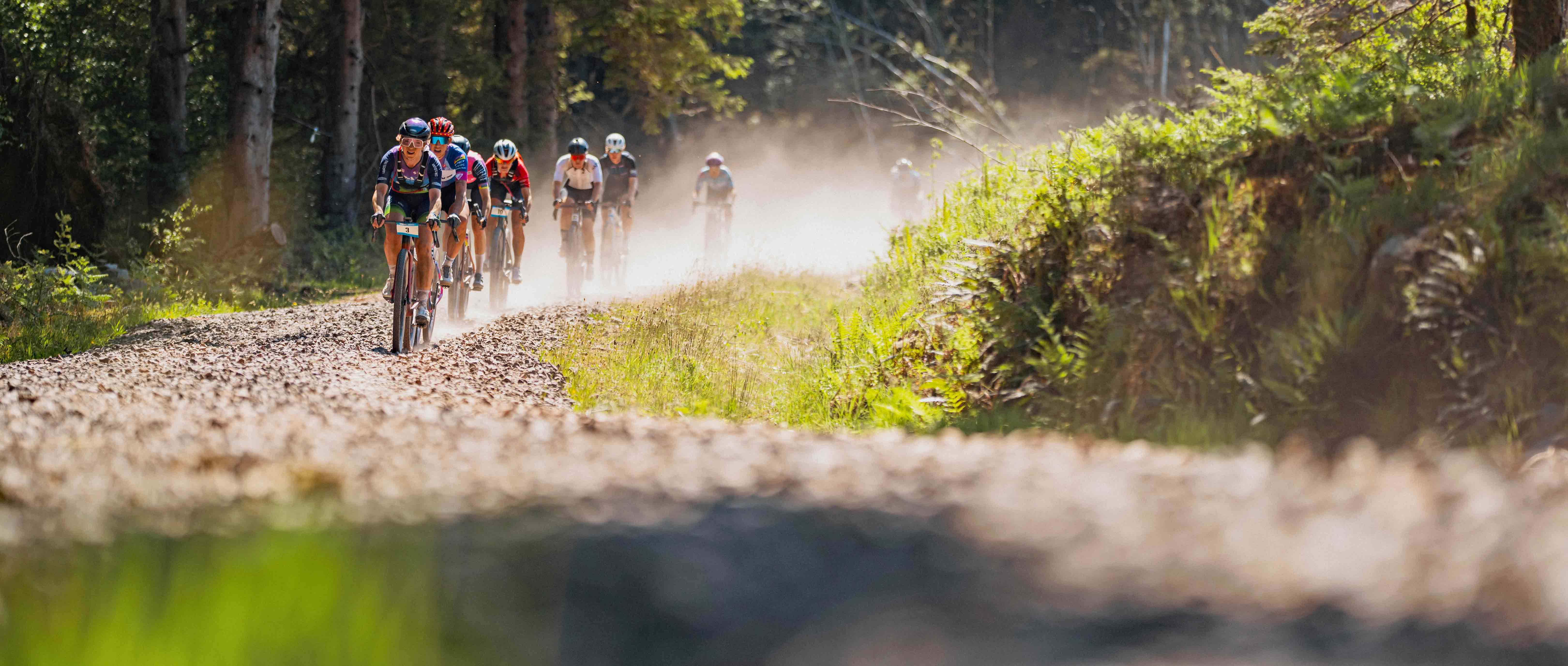
Image courtesy of The Gralloch/Joe Cotterill
But while the UCI Gravel 150 event had bad press post-race, The Gralloch in Scotland went out of their way in 2025 to elevate the female race. They provided a completely separate race two hours behind the men. It was safe, clean racing which was uninterrupted by male riders and I am sure there are other races in the series doing the same (Wales, Castellon, Poland). Like the GES, some UCI event organisers do understand and they demonstrate that it is possible to get it right. But for it to be consistent, the UCI needs to acknowledge the problem and apply clear and monitored rules to all sanctioned series races.
I asked Vervecken if he was willing to consider reviewing and tightening the UCI regulations. He said he could not guarantee that they would change, but that he would “open up a discussion at the end of the year with some of the top elite female riders”. I just hope he doesn’t mean only Lotte Kopecky and Marianne Voss (who he had name dropped multiple times on our call). Both are exceptional riders, but they are not making a living in professional gravel racing. As the GES recognises, it is the athletes who do that need a voice.
Freixes “For several years now, we have prioritised giving visibility and recognition to gravel athletes. While many events feature appearances by road cyclists - and many tend to promote these road athletes for marketing purposes - we’ve always believed that gravel athletes, who earn their living through gravel, deserve to be protected and placed on the podium they truly deserve.
We want to popularise gravel athletes as gravel professionals and not just see them as "secondary" compared to road riders. This is part of our mission: to help build a gravel identity and community that stands on its own.”
Additional considerations for race organisers:
- Professional women should start behind men (especially the 19-50 AGs)
- Start times: Minimum gap to men - 2 mins per 10km of course. E.g. 20 mins behind for a 100km course
- No drafting allowed between men and women
- Provide a motorbike in front of the lead women to warn riders ahead
- Raise awareness amongst amateur men to be mindful of the female race passing
- Clearly state rules / times / start order before the race so riders can choose whether to enter or not
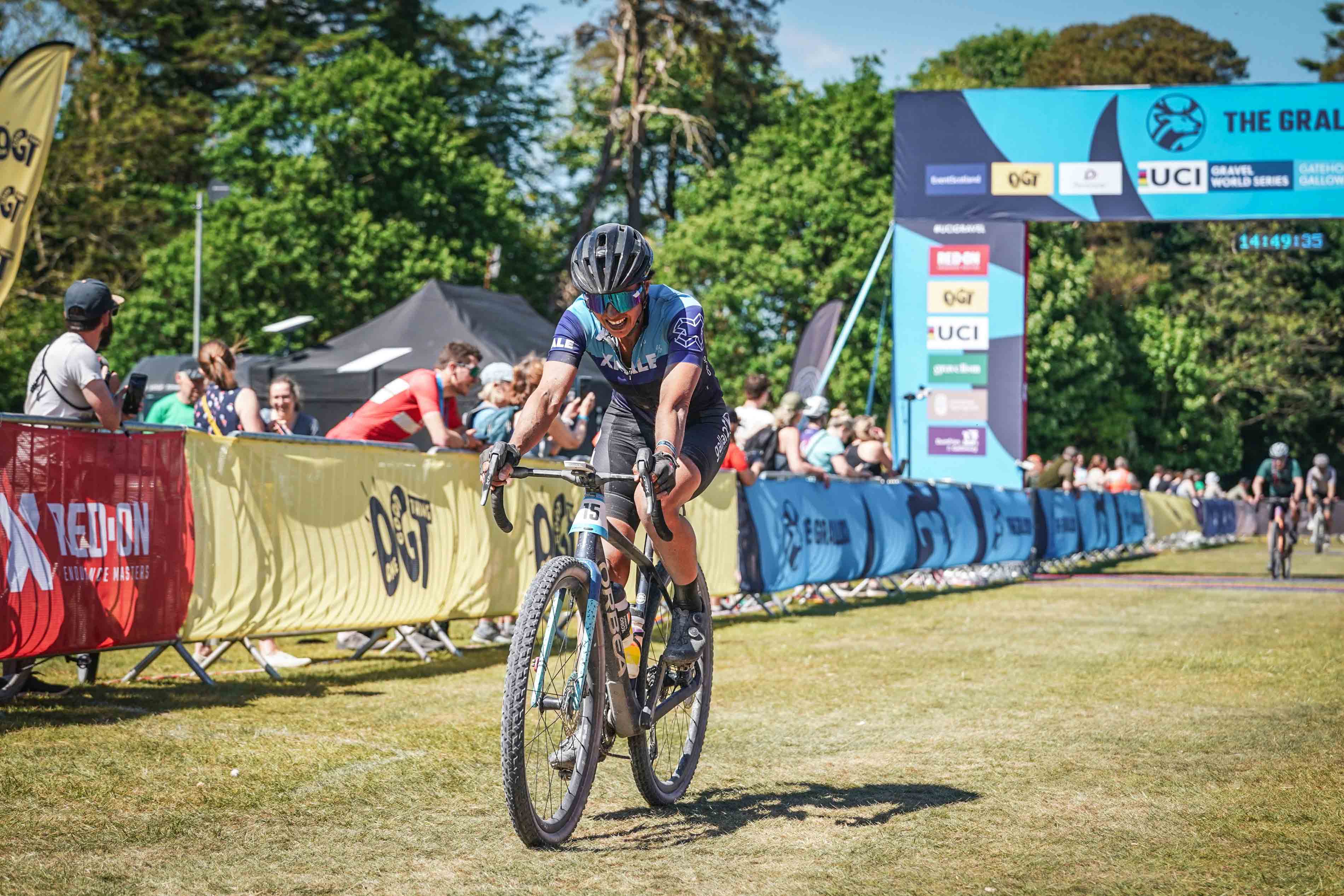
Image courtesy of Sportograf
Conclusion
All the stakeholders in this sport have a responsibility to elevate female professional gravel cycling so it can inspire the current and next generation. We are a minority in a male dominated sport, but that does not mean we should not play the same game and female professionals must continue to speak out. Some race organisers are doing a wonderful job and the GES have laid a near perfect model down for others to follow. But unless the UCI acknowledge that there is a problem and unless they agree to prioritise clean and fair professional female races consistently across their series, then individual races will continue to apply their own rules.
Perhaps there is not an ideal solution at every event – after all, the wide variety of courses in different parts of the world means each race is truly unique. That is part of the charm of gravel racing. But the sport cannot continue to hide in its roots, claiming to be inclusive while not providing the same game for female professionals as they do for the men. Raising awareness of the ways in which start orders and time gaps influences the female race and banning male/female drafting is a minimum start point. We can progress from there into the unknown future of this fast-growing sport.